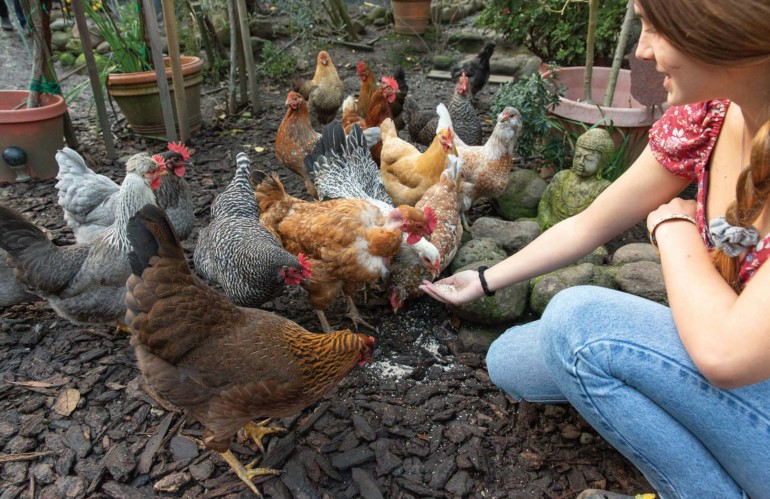BACKYARD URBAN CHICKEN farming isn’t a new idea. During the Great Depression, the U.S. government encouraged families to be self-sufficient and grow their own food. This trend diminished when small neighborhood groceries emerged, selling clean eggs and roasted chickens. Then in the mid-1990s the backyard chicken-raising movement ramped up, instructive websites launched and affinity groups formed, even though many communities still banned the practice. As recently as eight years ago many Marin cities still forbade it. Today, all allow it to an extent, some requiring a permit, and the practice is as popular as ever.
The appeal of at-home chickens goes way beyond the 4-H crowd; in Marin, not surprisingly, you can find everything from elaborate chicken McMansions to pricier Araucana hens laying fancy blue and green eggs to flocks consuming organic watermelon. “Marin chicken owners are inspired to treat their chickens with love and dignity,” notes Leslie Citroen of Mill Valley Chickens, a family business offering heritage chickens, coops, and feed and supplies. “Which I think makes owners of chickens in the rest of the country think we are bonkers.”
Who enjoys raising chickens?
While there’s no single poultry owner type, many do favor the eco-friendly life. As Citroen observes, “virtually all chicken owners are property owners, since most landlords won’t allow chickens, so it tends to be a more affluent crowd. Chicken owners also tend to be well educated and knowledgeable about factory farming and concerned about the food they eat and where it comes from.” Still, “it’s not for everyone,” admits Jim Pellegrin, who has four hens and a rooster in Point Reyes. “In fact, I’m surprised it’s for me, but all the same, late in life my wife and I find ourselves to be chicken people.” They’ve been happy home poultry raisers for five years.

What is the allure?
The best part: a bountiful supply of fresh eggs. “Chickens are pets with benefits,” as Citroen notes. But it’s more than food. “Chickens will steal your heart,” says Cynthia Samson of Homestead Valley, whose three birds include Daisy, an 11-year-old Silver Laced Wyandotte miraculously still laying eggs. “They have distinct personalities. Some are aloof; some love to snuggle. My favorite, Rose, would lie in my lap and sunbathe. She’d come over any time I sat down outside and hop up, lay her head down and stretch out a wing. She would also come when we called her name.” Chickens can be inquisitive, amusing to watch and attractive. They even “make good philosophers,” Pellegrin insists. “If you watch them closely, they can teach you a lot about life” or provide “solace or wisdom or just someone nonjudgmental to talk to.” They also gobble kitchen leftovers, excrete great natural fertilizer and reduce garden pests. “I think chickens have become popular in Marin because of the drought,” Citroen adds. “Some people have become uncomfortable with having large, expansive green lawns, so chickens are a nice way to change the use of the yard.”
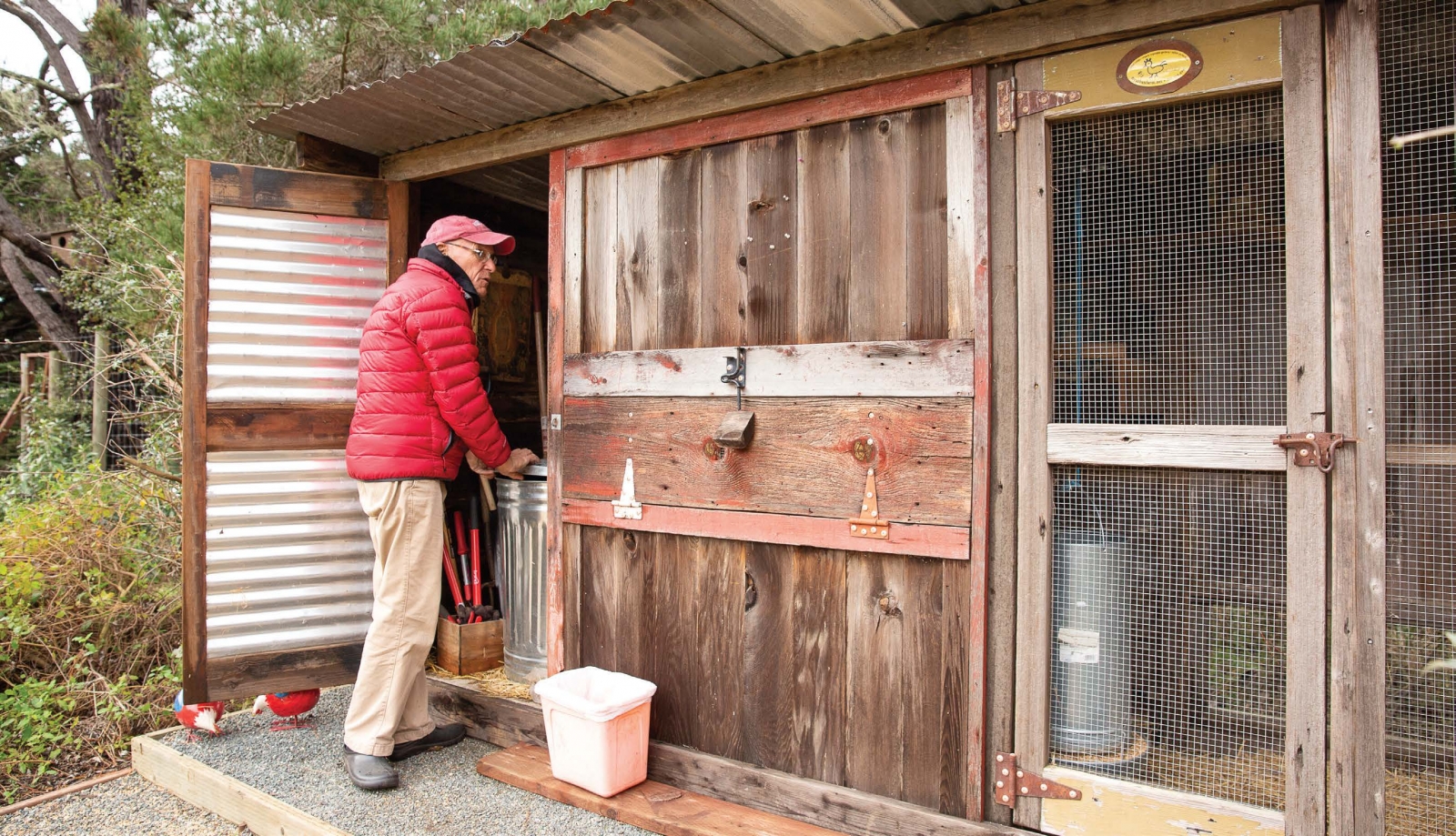
What does it take?
Before starting your flock, contact your HOA if applicable and your local planning department, as ordinances vary by town. Most regulate where to put fowl on properties, some limit the number of birds allowed and nearly all ban roosters; permits and neighbor approval may also be needed. You’ll want plenty of space for an enclosed nesting area, a coop with an elevated roost where the hens perch and sleep, and a run. These must all be kept clean to prevent disease. Still, “chickens don’t require much from us,” Samson says. “I clean their coop every few weeks and make sure they always have layer pellets (food) available. They have an automatic waterer and the door from their coop to their covered run is on a timer, so it opens and closes automatically. Chickens rise and rest with the sun, so we don’t need to tell them when to go to bed; they just do it. If we leave town for a week or more we ask a neighbor to pop by to make sure there’s food and clean water and to collect the eggs as payment for keeping an eye on them.”
Any downsides?
If a chick grows up to be a rooster and it’s illegal to have one where you live, you need a plan for relocation. For buying a pullet (a young hen that has just started laying eggs) or adopting an adult hen, Marin Humane Society or Petfinder.com are helpful resources. Predators are another hazard: “Everything — raccoons, skunks, rats, foxes, bobcats, hawks, coyotes, opossums — wants to eat chickens,” Pellegrin notes, so outfit your coop with security in mind. Samson agrees: “We’ve had a murderous bobcat here in broad daylight multiple times” and it “killed two chickens in one visit. So an extremely safe enclosure that is covered is critical, especially at night.” As Citroen points out, “One has to be very diligent with chickens. Sometimes it’s not possible to let chickens free range because of the predator situation and the chickens will need to spend their days in a secure run. Though it’s devastating to find the chickens taken by predators,” she adds, for kids that can be a vivid responsibility lesson. “My son forgot to lock them up one night and we lost four chickens to a raccoon attack. After that incident I never had to nag him to lock up at night.”
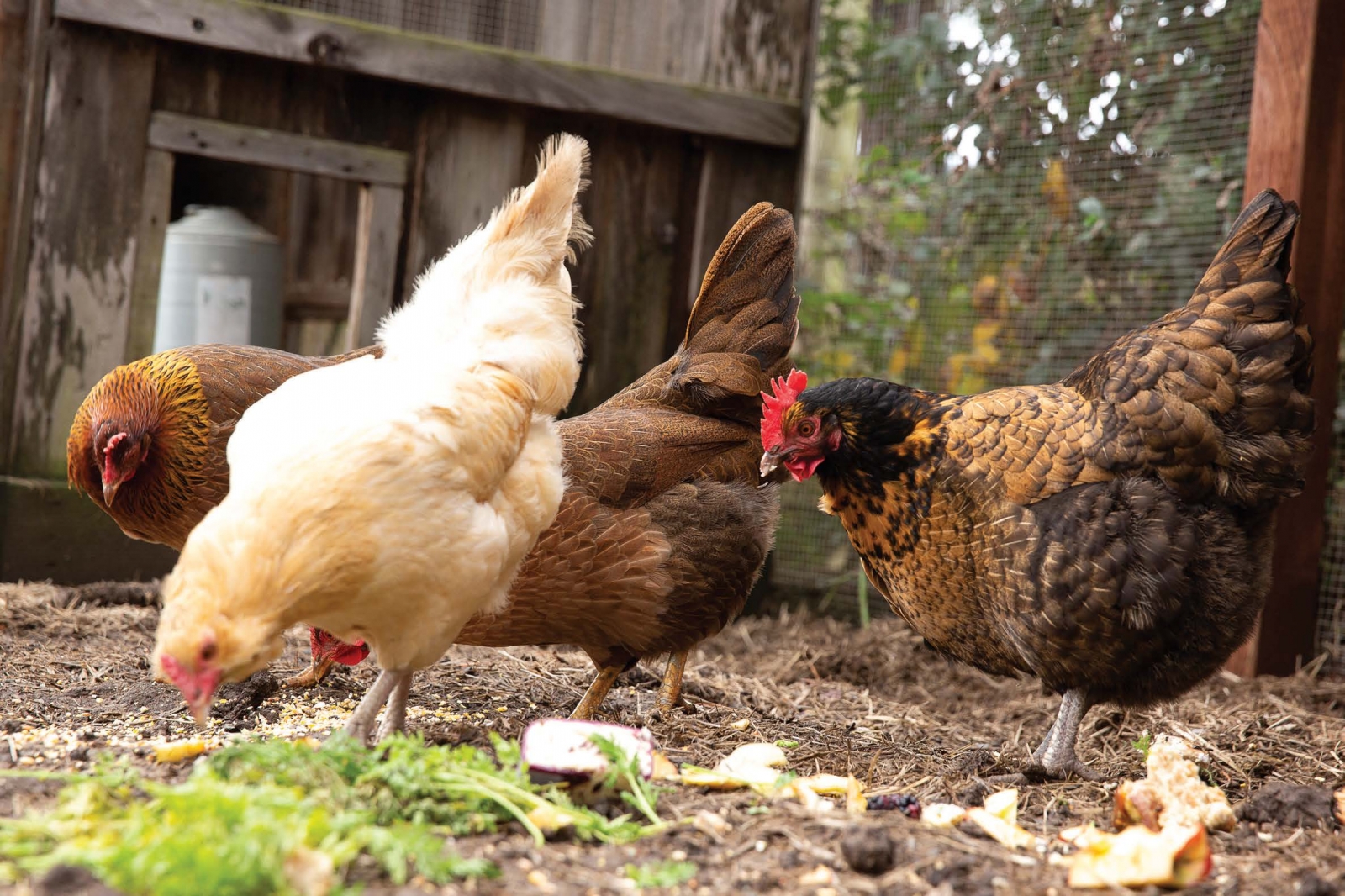
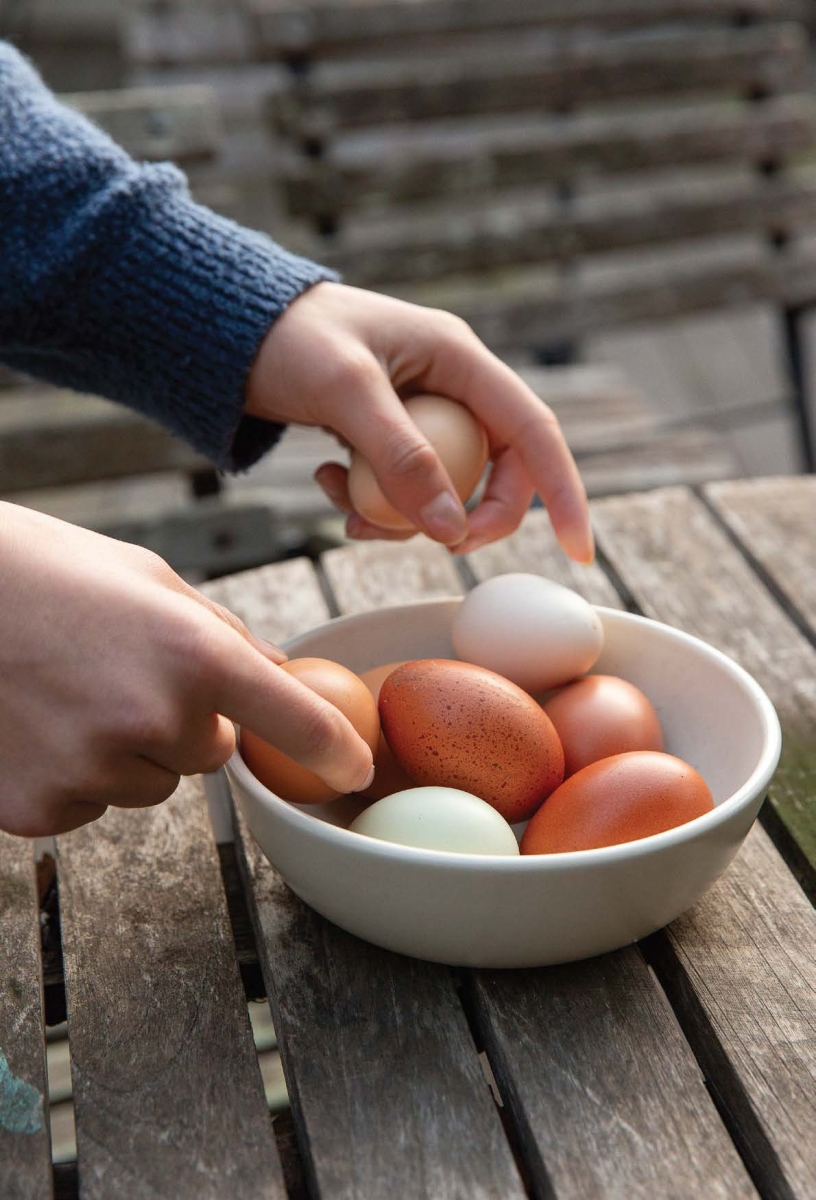
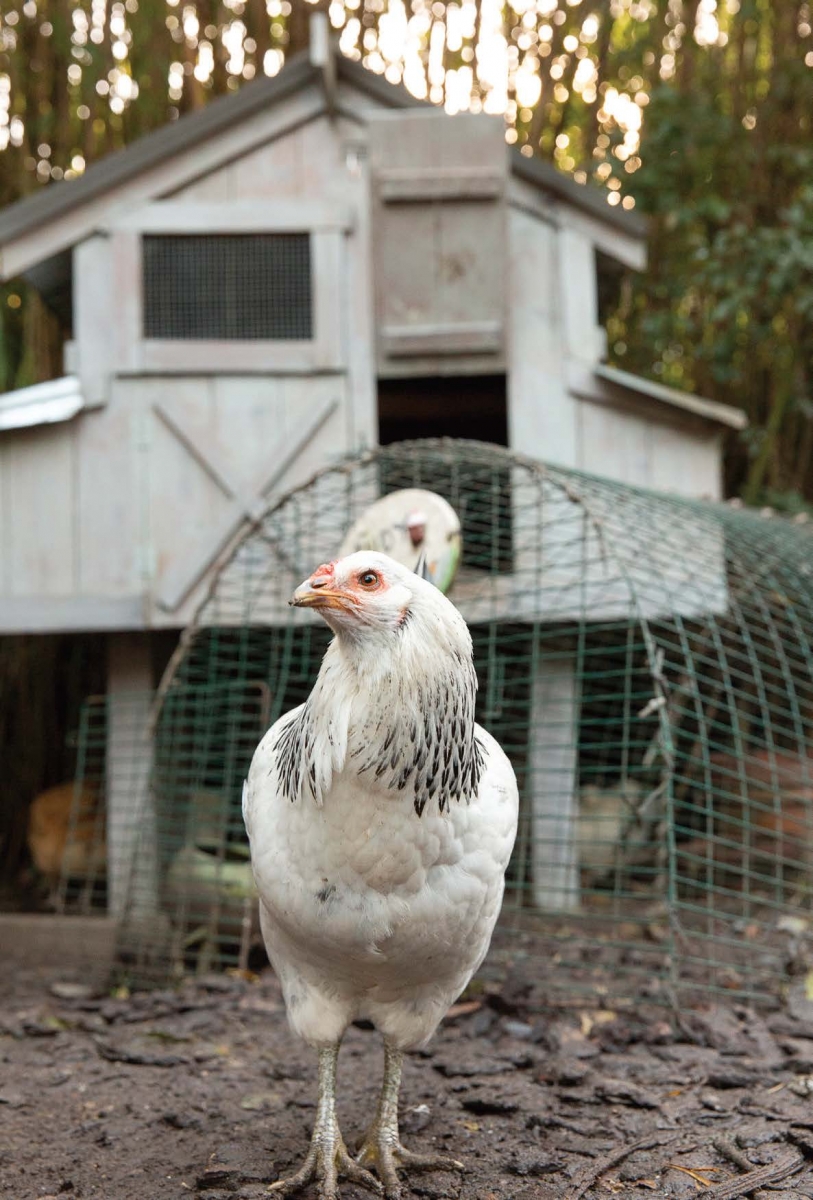
Local Vendors of Chicken Supplies
- Critterland in Mill Valley
- Mill Valley Chickens
- Novato Horse and Feed
- RiverTown Feed and Pet Country Store in Petaluma
- Toby’s Feed Barn in Point Reyes Station
- The Fairfax Backyard Farmer
Chicken Stats
- Properly cared for chickens live 8 to 10 years (or longer).
- Average juvenile hens start laying eggs around 6 months.
- Most laying breeds produce eggs for 5 to 7 years (or longer).
This article originally appeared in Marin Magazine’s print edition with the headline: “All Cooped Up”.

Kier Holmes is a native, Marin-based landscape designer who works at M2 Design and Construction, for over 15 years, has artfully designed and created sustainable gardens that are dynamic year round. She also writes for Gardenista, is an elementary school garden educator, a garden speaker for adults and leader of the Garden Club for kids at the Mill Valley Library. Holmes readily admits that she is a nerd about all things plant related, and can geek out on a dinner-plate dahlia like nobody’s business. Her natural habitat is among flowers and her hands are almost always dirty.

